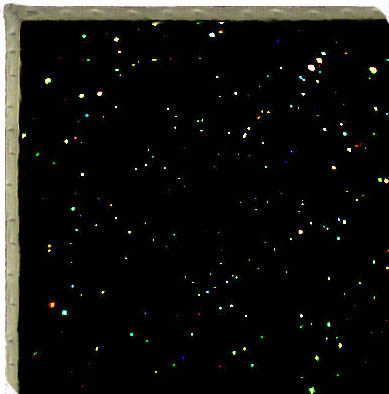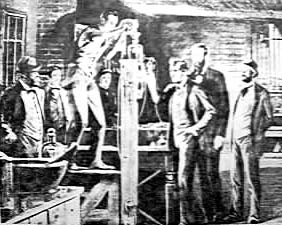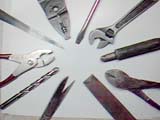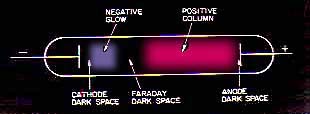

Just as Nature paints atoms into galaxies upon the
face of the deep space,
humans have created things from light bulbs to lasers,
mirrors to
microelectronics and food substances to pharmaceuticals
using vacuum
technology.
You can find a better and more detailed history
of vacuum science by checking
out Society
of Vacuum coaters http://www.svc.org
To quote Genesis: "In the beginning there
was darkness without form and void".
That set the stage for the universe.
Some claim that there was a great paint explosion
and then there
became light and stuff.
Billions of years later, in the 17th century, came
the realization that man could use vacuum too.
Theories about the validity of vacuum were debated
amongst the ancient
Greek. Roman of 420 BC ( Democritus,
Aristotle et al. ) and later of medieval natural
philosophers up to the 17th and early 18 th. Century
( Descartes, Boyle et al. ).
Galileo was one person who started doing actual
experiments like trying to draw water
up a straw that was taller than 30 feet. He noticed that,
no matter what he did from the top,
he could not get the water to be "sucked" up any higher.
Later, others decided to place the
pump at the bottom of the well, that permitted the water
to be pushed higher than the 30
foot height limit.
So what good is a vacuum?
The first use of vacuum was discovered by Torricelli
in 1644, is the classical barometer
that is now used for part of weather forecasting.
Why use a vacuum?
(1) Vacuum is room for stuff. It is
used to provide a physically clear space for things
(and radiation, such as light) to
move through without being hindered.
In Nature
The space between the sun and the earth is a vacuum.
Notice that the appearance of the sun light is
brighter during the mid-day than sunrise or sunset.
The sunlight passes through more air during
sunrise and sunset. The thicker air in the lower
atmosphere scatters the blue light of the sun light
back into space thus giving the sun an orangish cast.
The breathable atmosphere of the earth is only
a 1000th of the earth's diameter.
That is on the scale of a sheet of writing paper compared
to the diameter of a basket ball.
On that scale the sun would be the size of a 10
story building that is about 5
miles away. Light could not get from the sun to
the earth if there was atmospheric-pressure air in
between; the resistance to motion would be like trying
to toss that basketball through thick mud.
In man made works
An old, tube-type television used a cathode ray
tube as a display. This uses what is called an electron
beam or cathode ray
streaming from the small rear end towards the screen or front face of the
fat set.
This electric beam causes the phosphor on the inside
surface the glass face to glow. The beam is scanned and its intensity
is varied to produce a picture. Electron beams are hindered by air.
Even a millionth of an atmosphere inside
would scatter the beam, cause a very fuzzy,
unfocusable picture or simply not work.
Currently made LCD and other thin flat panel computer
and television displays are also made in
vacuum environments like those found within the tubes
of old TVs.
Besides providing an unobstructed space, vacuum is used to:
(2) Reduce or prevent undesired chemical reactions of sensitive materials with the air.
(3) Evaporation at lower temperatures at reduced
pressures, thus reducing or
avoiding the decomposition
in the distillation or condensation of heat sensitive materials.
(4) Insulate by preventing heat from being
carried away from heated objects (or to cooled
objects) by air
convection.
 |

This is a drawing of Edison with his team and friends, together making one of the first incandescent light bulbs in October 19, 1879. <The pump, the tall thing to the left, was invented by Sprengel in 1865. Edison had to beg for the use of it until he could obtain one of his own. |
A lot went on between that time and now, which is beyond the scope of this site.
Today, vacuum is used in a wide variety of research
projects ranging from chemical distillation to
sugar refinery and food drying,
microprocessor manufacturing. Giant beam machines
are used for everything from matter investigation, materials processing
to cancer treatment.
 |
The theory of air pumps designed for vacuum service |
 |
Make an actual air pump designed for
vacuum
service using only simple hand tools. This design avoids reliance on expensive and hard to access machine shops. |
 |
Make a small replica of the first
electric lamp. This one gives off safe, long-wave ultraviolet light. The illustration here is a simplified simulation of a
|
<------Back to main page <----Back to introduction <--Back to previous page.